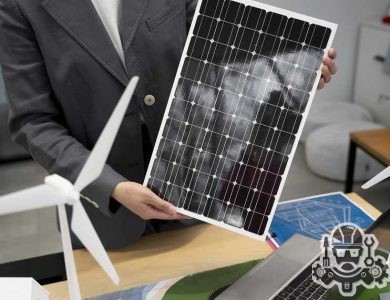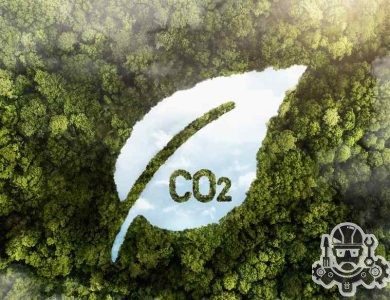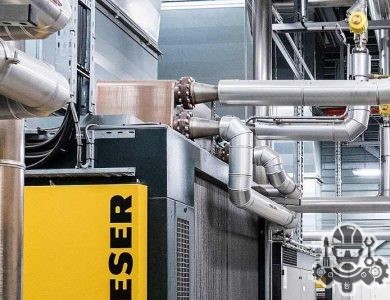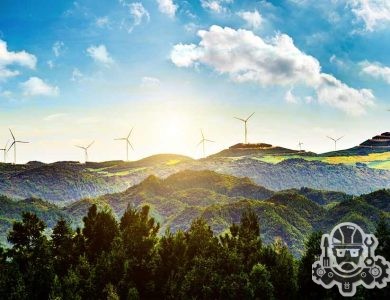All About Wind Power
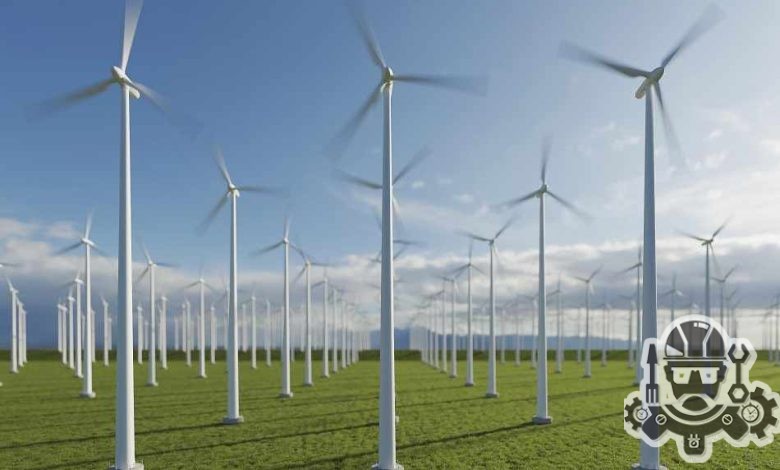
The Basics: Understanding Wind Power
Wind power is a form of renewable energy that is harnessed by wind turbines to produce electricity. Wind turbines consist of large propeller-like blades, which are connected to a rotor. When the wind blows, the rotor spins, and this motion is converted into electricity. The amount of electricity that can be generated depends on the size and number of turbines, as well as the strength of the wind.
Wind power is considered a clean source of energy because it does not produce any greenhouse gases or air pollution. It is also a sustainable energy source, as wind is a renewable resource that will never run out. Wind power is becoming increasingly popular around the world as countries seek to reduce their reliance on fossil fuels and meet their climate change goals.
| Benefits of Wind Power | Environmental Impacts | Economic Impacts |
|---|---|---|
| – Clean and sustainable energy source | – Reduces greenhouse gas emissions and air pollution | – Creates jobs in the manufacturing, installation and maintenance of wind turbines |
| – Reduces dependence on fossil fuels | – Can have some negative impacts on wildlife and their habitats | – Can provide economic benefits to local communities |
| – Can help countries meet their climate change goals | – Does not generate any toxic waste or hazardous materials | – Can reduce energy costs for consumers |
However, wind power does have its limitations. Wind turbines require significant amounts of land and can have negative impacts on wildlife and their habitats. Additionally, wind power is dependent on the strength and consistency of the wind, which can vary depending on the location and season.

Despite these limitations, wind power has emerged as a viable alternative to traditional fossil fuels and is expected to play a significant role in the transition to a more sustainable and low-carbon energy system in the future.
Contents
- 1 Turbines 101: How Wind Energy İs Captured
- 2 Harnessing The Wind: Offshore And Onshore Wind Farms
- 3 The Benefits Of Wind Power: Environmental And Economic Impacts
- 4 The Future Of Wind Energy: Advancements And Predictions
- 5 Common Misconceptions About Wind Power
- 6 The Role Of Government İn Wind Power Development
Turbines 101: How Wind Energy İs Captured
Wind energy has become an increasingly popular renewable energy source in recent years, with more and more countries investing in the development of wind farms. But how exactly is wind energy captured? The answer lies in turbines.
Wind turbines are the machines responsible for converting wind energy into electricity. They come in many different sizes and forms, from small turbines that power individual homes, to large utility-scale turbines that can power entire cities.
| Type of Turbine | Height | Location |
|---|---|---|
| Small scale turbines | Up to 30ft | On top of buildings or other structures |
| Medium scale turbines | 30-100ft | On farms or commercial properties |
| Large scale turbines | Over 100ft | Wind farms on land or offshore |
Regardless of their size, all wind turbines work on the same basic principle. The turbine blades, which are shaped like airfoils, catch the wind and begin to rotate. This rotation powers a shaft connected to a generator, which then produces electricity.
There are two main types of wind turbines: horizontal-axis turbines and vertical-axis turbines. Horizontal-axis turbines are the most common type and have blades that rotate around a horizontal axis. Vertical-axis turbines, on the other hand, have blades that rotate around a vertical axis and are less commonly used.
Finally, in order to capture wind energy effectively, turbines are typically placed in areas with high wind speeds. This can include open fields, hillsides, and offshore locations. By harnessing the power of wind, turbines play an important role in the development of renewable energy and the reduction of greenhouse gas emissions.
Harnessing The Wind: Offshore And Onshore Wind Farms
The world is headed towards renewable sources of energy, and wind power is a part of this transition. Wind energy can be harnessed both onshore and offshore using wind farms. Let’s take a closer look at these two methods of wind power generation.
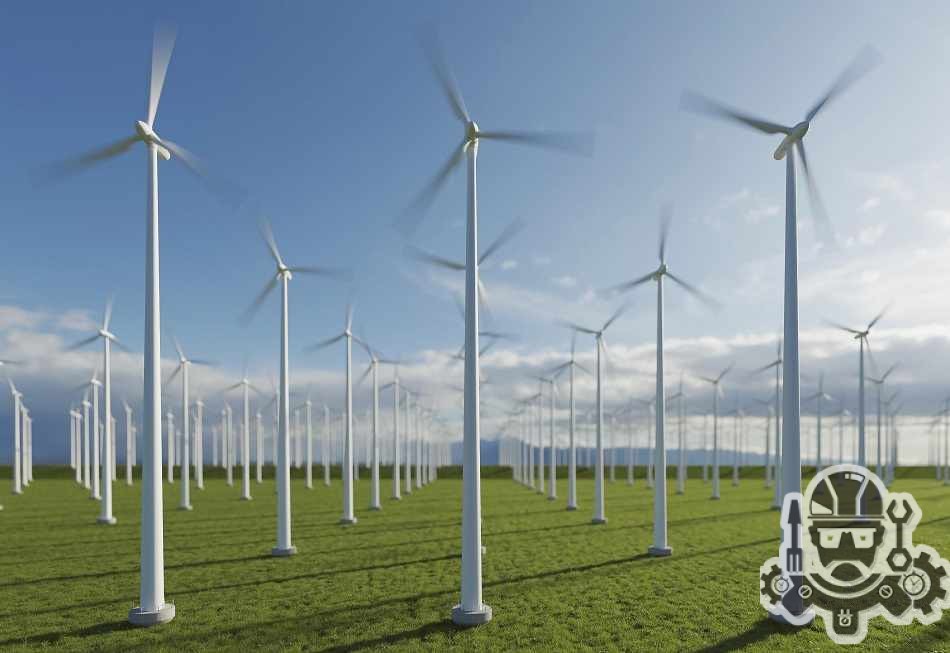
Onshore Wind Farms
Onshore wind farms are installed on land, usually in a location with high average wind speeds. The turbines are placed in a line or a grid, and the power generated is sent to the local power grid for distribution. These wind farms can range in size from a handful of turbines to hundreds of them.
| Benefits of Onshore Wind farms | Challenges of Onshore Wind Farms |
|---|---|
|
|
Offshore Wind Farms
Offshore wind farms, as the name suggests, are installed in open water, usually in a location with strong wind speeds. The turbines are placed on towers that are anchored to the seabed. The power generated is sent back to shore using underwater cables and is added to the power grid in the same way as onshore energy. Offshore wind farms can be located close to the shore or miles out at sea.
| Benefits of Offshore Wind Farms | Challenges of Offshore Wind Farms |
|---|---|
|
|
Both onshore and offshore wind farms have their benefits and challenges, but they are an important part of the global effort to move towards renewable energy. As advancements and investment continue in this space, we can expect to see more wind farms being developed, both on land and at sea.
The Benefits Of Wind Power: Environmental And Economic Impacts
Wind power is one of the most promising sources of renewable energy in the world today, and for good reason. It offers a number of significant advantages over traditional fossil fuels and is becoming an increasingly important component of the global energy mix. In this blog post, we will discuss the benefits of wind power, both in terms of its environmental impact and its economic potential.
Firstly, wind power is a clean, renewable and sustainable source of energy. Unlike fossil fuels such as coal, oil and gas, wind energy does not produce any harmful greenhouse gas emissions or air pollutants. This means that wind turbines do not contribute to climate change or air pollution, and they do not produce any toxic waste products that need to be disposed of. In addition, the wind is a free and abundant resource that is available all around the world, making it a highly sustainable and reliable source of energy.
Secondly, wind power has numerous economic benefits. According to recent studies, wind energy is currently one of the cheapest sources of electricity in many parts of the world, and this trend is expected to continue as technology improves and economies of scale are achieved. In addition, wind turbines can be installed on a range of different sites, including offshore locations, which can help to reduce the cost of land use and open up new opportunities for job creation and economic growth. Furthermore, wind energy is a domestic source of energy, which means that it can help to reduce dependence on foreign oil and gas imports and improve energy security.
| Environmental Benefits | Economic Benefits |
|---|---|
| – No greenhouse gas emissions – No air pollution – Sustainable and renewable – Free and abundant resource |
– One of the cheapest sources of electricity – Can be installed on a range of sites – Creates opportunities for job creation and economic growth – Domestic source of energy |
In conclusion, wind power offers a range of important environmental and economic benefits that are helping to transform the global energy landscape. By harnessing the power of the wind, we can reduce our dependence on fossil fuels, protect the environment and create new economic opportunities for communities around the world. As we continue to invest in wind energy and adopt new technologies, we can look forward to a cleaner, more sustainable and prosperous future for all.
The Future Of Wind Energy: Advancements And Predictions
As the world becomes more aware of the harmful effects of non-renewable energy sources, the demand for wind energy is on the rise. Wind power is already a major part of the global energy mix, but what does the future hold for this sustainable technology? In this post, we will explore the advancements and predictions for the future of wind energy.
One major advancement in wind energy is the increase in the efficiency of wind turbines. Thanks to technological advancements, modern turbines are becoming more efficient every year. The efficiency of these turbines has improved so much that wind energy is now competitive with traditional sources of energy in terms of costs. This means that as technology continues to improve, wind energy could become even more cost-effective and accessible to everyone.
Another significant advancement in wind energy is the use of offshore wind farms. Offshore wind farms are located in the ocean, where there is a strong and consistent wind. These farms are becoming more popular as they can generate more electricity compared to onshore turbines. Offshore wind farms can also be located closer to populated areas, reducing the need for long-distance transmission lines.
| Advancements in Wind Energy | Predictions for the Future of Wind Energy |
|---|---|
| Increased efficiency of wind turbines | Wind energy could become the leading source of electricity |
| Offshore wind farms | More countries will invest in wind energy |
| Bigger turbines | Wind energy will become more accessible to everyone |
One prediction for the future of wind energy is that it will become the leading source of electricity in the world. Many countries have already set ambitious targets for the growth of wind energy in their energy mix. As technology improves, wind energy could become even more cost-effective and accessible to everyone.
Another prediction for the future of wind energy is that more countries will invest in this renewable source of energy. Many countries are already seeing the potential of wind energy and investing heavily in it. As the cost of wind energy continues to decrease, more and more countries will follow suit.
Finally, bigger turbines are expected to be developed in the future. Larger turbines will produce more electricity, making wind energy even more efficient. This will also make wind energy more accessible to everyone, as fewer turbines will be needed to generate the same amount of electricity.
In conclusion, the future of wind energy looks very promising. As technology continues to improve, wind energy will become more cost-effective and accessible to everyone. The use of offshore wind farms and larger turbines will also help provide more electricity to people around the world. It is clear that wind energy will be a major part of the global energy mix, and it will play a significant role in reducing the world’s dependence on non-renewable energy sources.
Common Misconceptions About Wind Power
Wind power is a renewable energy source that has the potential to provide clean, sustainable energy for generations to come. Despite its many benefits, there are still some common misconceptions about wind power that prevent people from fully embracing it as a viable energy source. In this blog post, we will address some of these misconceptions and set the record straight on wind power.
Misconception #1: Wind turbines are noisy and harmful to wildlife.
While it is true that early wind turbine designs were noisy and posed a danger to birds and other wildlife, modern wind turbines are designed to be much quieter and safer for wildlife. In fact, many wind farms employ measures such as radar and bird detectors to help reduce the risk of harm to flying creatures. Furthermore, the noise generated by wind turbines is actually comparable to that of typical background noise, such as traffic or air conditioning units.
Misconception #2: Wind power is expensive and unreliable.
This is a common misconception that is based on outdated information. In recent years, advances in wind turbine technology and manufacturing have led to significant cost reductions for wind power. In fact, wind power is now one of the most cost-effective forms of renewable energy, and in many cases is becoming more affordable than fossil fuels. As for reliability, wind power is becoming increasingly efficient at harnessing the power of the wind and generating consistent energy, making it a viable alternative to traditional power sources.
Misconception #3: Wind power is only suitable for certain regions or climates.
While it is true that some regions or climates may be more conducive to wind power than others, wind turbines can be installed in a variety of settings. In fact, some of the best locations for wind power are in places that may not seem obvious at first. For example, some of the world’s best wind resources can be found offshore, where the winds are often stronger and more consistent. Additionally, advances in wind turbine technology have made it possible to capture energy from lower wind speeds, opening up new possibilities for wind power in regions that were once thought to be unsuitable.
| Misconception | Fact |
|---|---|
| Wind power is harmful to human health. | Studies have shown that wind turbines do not pose a significant risk to human health. Common complaints such as headaches and sleep disturbance are often attributed to other factors, such as anxiety or stress. |
| Wind power is not as efficient as other forms of renewable energy. | Wind power is one of the most efficient forms of renewable energy, and is becoming more so with advances in technology. In fact, wind power is often more efficient than solar power, particularly in areas with consistent winds. |
| Wind turbines are unsightly and decrease property values. | While some people may find wind turbines to be aesthetically unappealing, studies have shown that they do not have a significant impact on property values. In fact, many people consider wind turbines to be a positive addition to their community, as they represent a commitment to clean energy and a sustainable future. |
In conclusion, wind power is a clean, efficient, and cost-effective form of energy that has the potential to transform the energy landscape for generations to come. While there may be some misconceptions about wind power, it is important to base our understanding on the latest information and research. By working together to overcome these misconceptions, we can help move towards a more sustainable future powered by wind energy.
The Role Of Government İn Wind Power Development
The role of government in wind power development cannot be overstated. Governments around the world have invested heavily in wind power projects, and for good reason. Wind power offers numerous benefits, both in terms of environmental impact and economic growth.
One of the main ways in which the government supports the development of wind power is through subsidies. Subsidies are essentially financial incentives that are given to wind power projects in order to help offset some of the costs associated with developing and operating wind turbines. These subsidies can take many different forms, including tax breaks, direct payments, and loan guarantees. By providing subsidies, governments can help encourage the growth of wind power without burdening developers with the full cost of the project.
Another way in which the government supports wind power is through regulations and policies that encourage the adoption of renewable energy sources. For example, some governments require utilities to generate a certain percentage of their power from renewable sources, such as wind, by a certain deadline. This type of policy can help provide a market for wind power and create demand for new wind power projects.
| Government Action | Effect on Wind Power |
|---|---|
| Subsidies | direct financial assistance for wind power projects |
| Regulations and Policies | encourage use of wind power through legislative action |
- In addition to subsidies and regulations, the government can also play a role in facilitating the development of wind power projects by providing infrastructure support. This can include things like building new transmission lines to connect wind farms to the grid, or providing funding for research and development of new wind turbine technologies. By investing in the infrastructure needed to support wind power projects, the government can help create the conditions necessary for the industry to grow and thrive.
Overall, the role of government in wind power development is vital to the success of the industry. From financial support to regulatory policies to infrastructure investment, governments can help create the conditions necessary for wind power to become a major source of renewable energy around the world.
